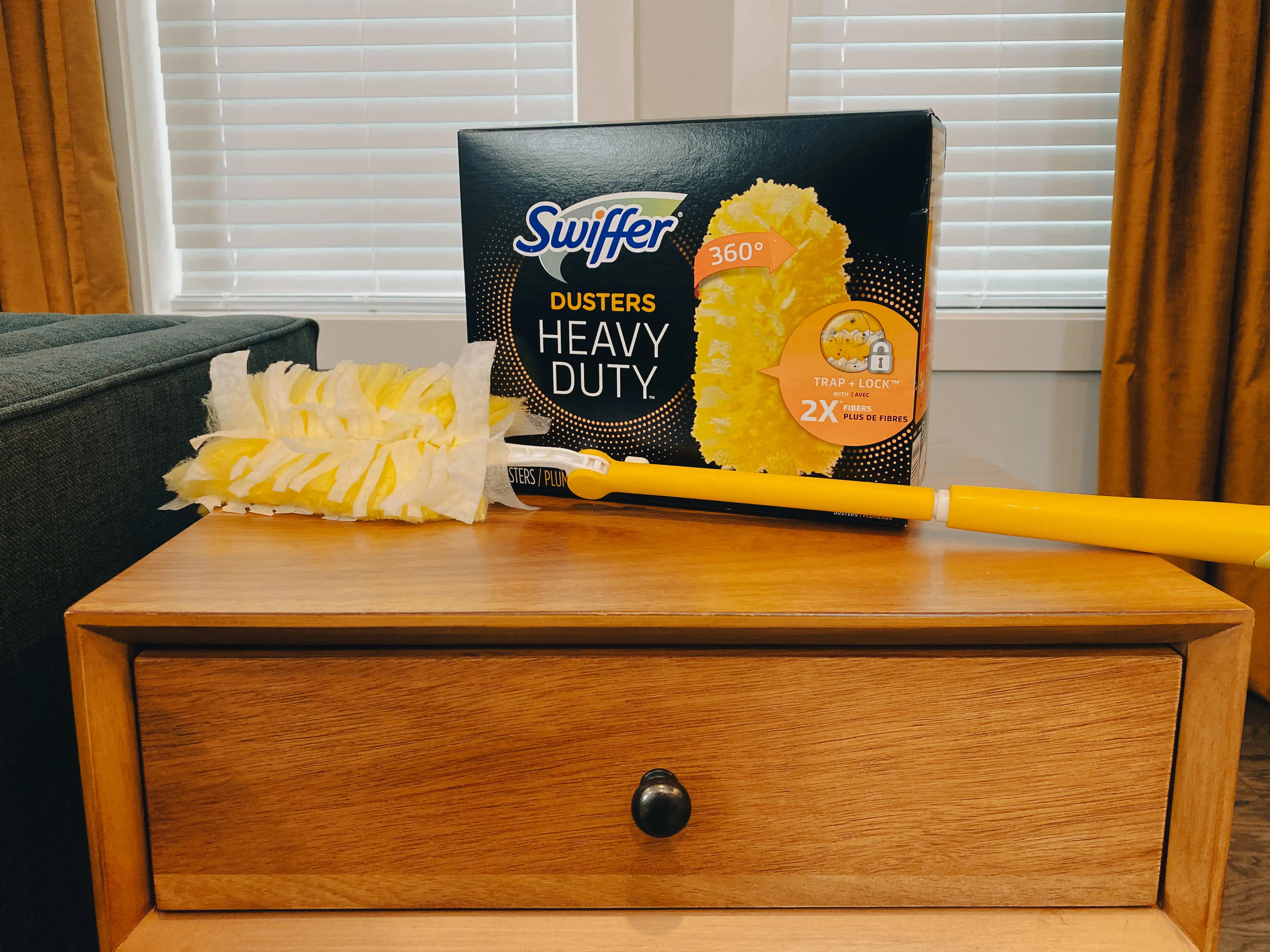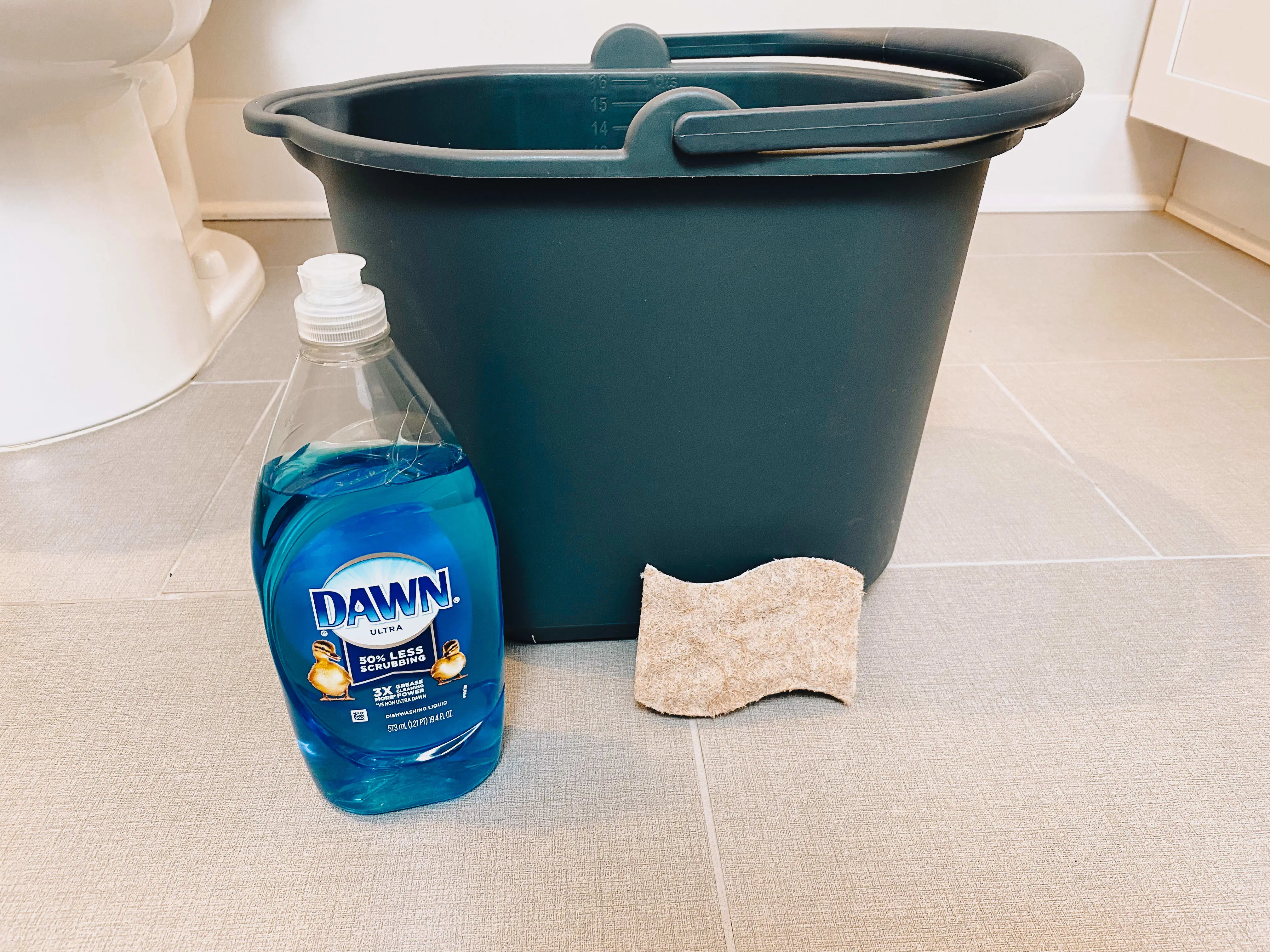Ugh, wallpaper is the coolest. (And we’re not talking about the background on your computer.) And bless your heart if you’ve got the patience to put it up yourself. Whether it’s just an accent wall (We see you, you pandemic home improvement machine!) or you’ve transformed your entire dwelling into a full 1950s time capsule, we commend you. (And maybe we’re just a tad jealous, too.) But wallpaper is just an additional thing you’ve got to clean. Don’t think you’re getting out of scrubbing your walls just because you’ve covered them in gorgeous patterns of leafy jungle plants or geometric patterns with sparkly gold inlay.
Oh no, wallpaper still requires maintenance. Dust and moisture can cause wallpaper to discolor, not to mention bubble and peel. Routine wallpaper cleaning is even more essential if your wallpaper is located in the kitchen, where it’s exposed to oils, smoke and all sorts of sticky stuff. Or the bathroom, where humidity runs rampant and mold and mildew thrive.
Our Dry Erase Wallpaper cleaning guide breaks down how to clean wallpaper of all varieties, from dust and smudges to grease and dander.
How to clean wallpaper in 3 easy steps
First of all, what sort of wallpaper do you have? If you don’t know, it’s likely vinyl, which is easily the most popular type of wallpaper. But it could be any of the following, so find out before you get to scrubbing.
- Vinyl Vinyl wallpaper is both quite affordable and super resilient. Vinyl runs the gamut aesthetically. Sometimes the cheaper stuff will sport a sort of plastic-y sheen, but more modern renditions can appear to resemble stone, wood or other natural surfaces. Vinyl is built to withstand kitchen and bathroom environments, meaning it can also handle a more abrasive deep clean than other types of wallpaper.
- Fiberglass Fiberglass wallpaper is also pretty hearty—and it’s even flame resistant! It’s certainly pricier, but you get what you pay for. Often fiberglass wallpaper can last up to 30 years before it shows signs of fading or discoloration.
- Cellulose Cellulose is made up of plant fibers that come from wood pulp. Most actual vintage wallpaper is made of cellulose, which fades easily over time (especially from sun exposure) and is quick to wither from water damage. Newer versions of cellulose wallpaper add cotton fiber into the mix, creating a sort of liquid wallpaper that’s painted on, which is more breathable and also eco-friendly. You can achieve some cool textures with this stuff, but avoid using harsh cleaners on it. Also, it doesn’t fare well with humidity.
- Bamboo Bamboo wallpaper is also (obviously) plant-based, and therefore eco-friendly and sustainable. It’s bad in humid environments and easily damaged by water.
- Hybrid This type of wallpaper is generally a blend using both synthetic and natural fibers, which lets your walls breathe a bit. Hybrid wallpaper tends to cost more and is hard to wash, meaning you’ve got to dust it regularly to maintain its like-new appearance.
- Fabric Fabric wallpapers are all the rage (if you can afford them). They’re not cheap, and often incorporate elements of silk, velvet or linen. Best to dry dust and actually vacuum fabric wallpapers instead of using liquid cleaning agents on them.
- Removable For those commitment-phobes, removable wallpaper offers an escape hatch. This stuff is really neat, made up of vinyl or woven polyester. You basically peel off the backing and apply it to your wall like a giant sticker. The low-tack adhesive sticks to a variety of walls and paint finishes, from matte to high-gloss. However temporary this wallpaper may seem, if you tend to it, it ought to last several years.
For cellulose, fabric, bamboo, hybrid, or removable wallpaper:
These guys are very sensitive to water. You’ll want to stick to simple dusting and maybe a light vacuum, instead of using any sort of wet cleaning product or solution.
- Using a microfiber cloth or a Swiffer Dusters Heavy Duty Super Extender (which is perfect for getting all those hard-to-reach corners and ceiling seams with its swivel head and extendable handle), hit your wallpapered wall(s) with a good, thorough dusting about one a month.

- You can also vacuum your walls using a wall brush extension. Be mindful not to actually scour your wall with a bristled extension. You simply want to suck the dust away, not scrub.
- When dusting or vacuuming your wallpaper, always start at the top and work your way down.
For vinyl and fiberglass wallpapers:
These types of wallpapers are much more durable and can handle a deeper clean. Still, best to clean your wallpaper with nonabrasive chemicals and use soft rags (ideally microfiber) or sponges.
- Dust
- Always dust your wallpaper before washing it to remove any grime or cobwebs.
- Using a microfiber cloth or a Swiffer Dusters Heavy Duty Super Extender (which is perfect for getting all those hard-to-reach corners and ceiling seams with its swivel head and extendable handle), hit your wallpapered wall(s) with a good, thorough dusting about one a month.
- You can also vacuum your walls using a wall brush extension. Be mindful not to actually scour your wall with a bristled extension. You simply want to suck the dust away, not scrub.
- When dusting or vacuuming your wallpaper, always start at the top and work your way down.
- Soap + Water
- Time for the deep clean. Mix a couple drops of dish soap (like Dawn) into a bucket of warm water.

- Dip your microfiber rag or soft sponge into the bucket, and wring it out well.
- Wipe down the wallpaper from top to bottom, rinsing and wringing out your rag often.
- Even if there are spots or stains, do not scrub them too hard. Just wipe gently in a top-to-bottom motion.
- Allow walls to air dry or blot them dry with a clean towel.
- Spot Treat Stains
- For smudges and spots, best to try to determine what it is before you tackle it.
- For discoloration from handprints, try gently rubbing the stain with a rubber eraser or a slice of plain white bread. We know, that’s totally weird, but trust us.
- For water stains or grease smears, you can try dabbing at it with a cotton swab soaked in a diluted bleach solution or hydrogen peroxide and letting it sit for 5–10 minutes. Then wipe the area clean with a damp sponge.
- Warning: Depending on the material and color of your wallpaper, this could cause further discoloration. Best to test this technique on a small, inconspicuous patch of wallpaper someplace before getting after it.
- For mildew caused by water damage on vinyl wallpaper, mix a solution of equal parts warm water and white vinegar. Apply to the offending stain, and let it sit for 5–10 minutes before wiping it clean with a damp sponge.
- You also risk discoloring your wallpaper with acidic vinegar, so do a test run in a small spot first.
- For dirt stains on fiberglass wallpaper, mix a solution of equal parts warm water and white vinegar. Apply to the offending stain and let it sit for 5–10 minutes before wiping it clean with a damp sponge.
- Once again, you could further discolor your wallpaper with acidic vinegar, so best to do a test run in a small spot first.
If you’ve got any other curious or offensive stains on your wallpaper, we suggest contacting the wallpaper manufacturer for further information and advice on how to best clean it. If you thought cleaning wallpaper was fun, we’ve got even more tips for how to clean your walls—including how to remove your kiddo’s latest crayon masterpiece and even how to banish permanent marker stains.





